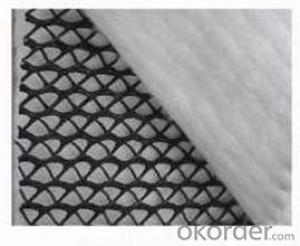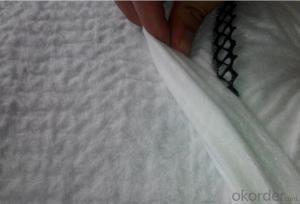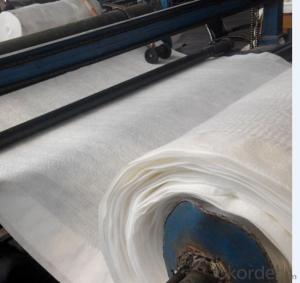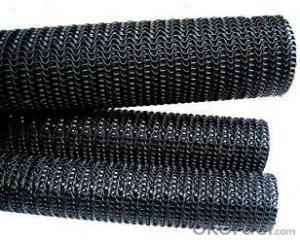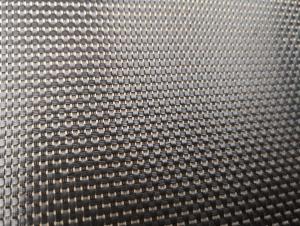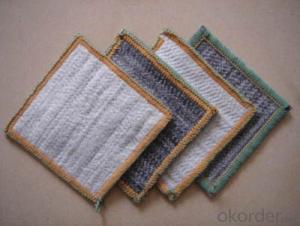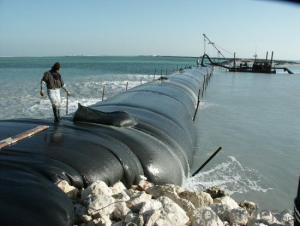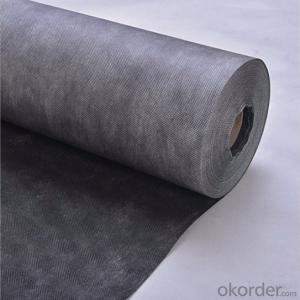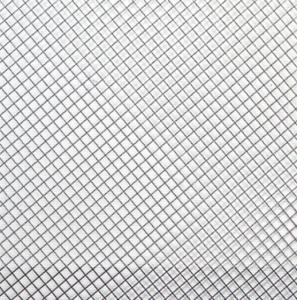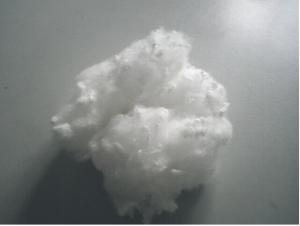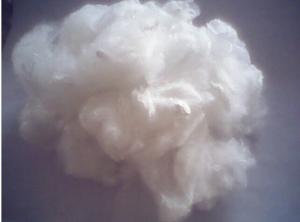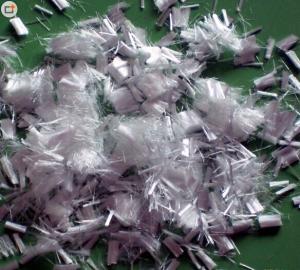HDPE Geocomposite Drainage for Road Contruction
- Loading Port:
- Qingdao
- Payment Terms:
- TT OR LC
- Min Order Qty:
- 2000 m²
- Supply Capability:
- 200000 m²/month
OKorder Service Pledge
OKorder Financial Service
You Might Also Like
HDPE Drainage Geocomposite / Composite drainage geonet
Description :
for drainage is made of a unique trmension geonet adhibited geotextile on both sides.it has the property of geotextile(filtration function ) and geonet (drainage and protection ) and provide a function system"filtration-drainage-protection".the core of net with its unique tr-dimension structure can bear higher compressing load in construction and remain the certain thickness,
provide good water conductivity.
Application:
1) Landfill drainage;
2) roadbed and road drainage;
3) railway drainage;
4) tunnel drainage,
5) underground structure drainage,
6) the retaining back wall drainage;
7) gardens and sports ground drainage
Features:
1)Excellent drainage function, can bear long time hige press load
2)High tensile and shear strength
3Reduce the rate geotextile embedding into the core of geonet, can protect long time stable water conductivity
4)Tri-dimension composite geonet for drainage can bear more than 2000kpa compression load
5)Its anti-compression capacity is much larger than common geonet for drainage
6) Certificate :ISO14001:2004, ISO9001:2008
Specifications and technical parameters:
Drainage network core | units | Specification | ||||
Unit weight | g/m2 | 750 | 1000 | 1300 | 1600 | |
Thickness | Mm | 5.0 | 6.0 | 7.0 | 7.6 | |
Hydraulic conductivity | m/s | kx10-4 | Kx10-4 | Kx10-4 | Kx10-4 | |
Elongation | % | 50 | 50 | 50 | 50 | |
Tensile strength (core netwaork) | kN/m | 8 | 10 | 12 | 14 | |
Geotextile | g/m2 | Heavier grades of geotextiles can be bonded to geonet on request | ||||
Usages:
In the railway, highway and other transportation infrastructure, drainage system safety and the service life
of the project and its have inseparable relationship, in which the geotextile material is an important part
of drainage system, the drainage effect of 3D composite drainage net is particularly notable. mainly
used for tunnels, municipal engineering, reservoir, revetment in drainage engineering.
FAQ
1. Which payment do you accept?
For you convinience,our payment can be L/C,TT
2. Is free sample available?
We can supply free samples if you need.
3. How about your quality?
We have strict quality control system, we make testing on incoming raw material and finished products. Your third party testing is also welcomed. With high quality, our products are used on government projects at home and abroad. Our product quality is accepted by clients from all over the world.

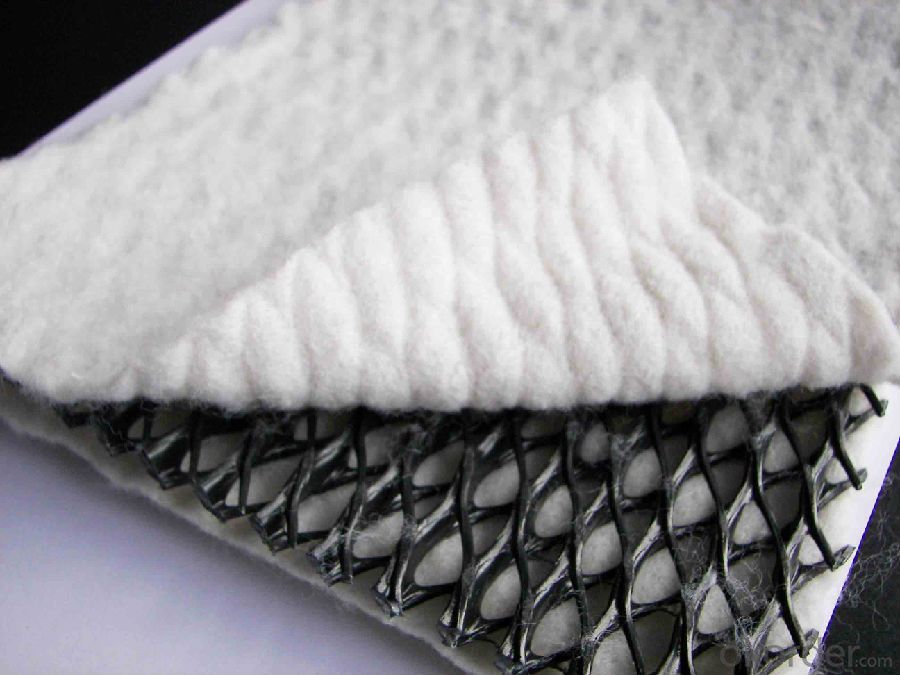
- Q:How do geogrids aid in stabilization of steep slopes in earthwork applications?
- Geogrids aid in stabilization of steep slopes in earthwork applications by providing reinforcement and preventing soil erosion. They are typically made of high-strength polymer materials that are placed within the soil to create a strong and stable structure. The geogrids interlock with the soil particles, increasing the overall strength and resistance to sliding or slumping. This reinforcement helps to distribute the loads more evenly, reducing the potential for slope failure. Additionally, geogrids help to control soil erosion by providing a barrier that prevents soil particles from being washed away by rainfall or surface water flow. Overall, geogrids improve the stability and longevity of steep slopes in earthwork applications.
- Q:How are geocells used for load support in utility trenches?
- Geocells are used for load support in utility trenches by acting as a reinforcement system. They are installed horizontally within the trench and filled with compacted soil or aggregate material. This creates a strong and stable foundation that helps distribute the load from the utilities and prevent settlement or deformation of the trench.
- Q:How do earthwork products contribute to erosion control on hillsides?
- Earthwork products, such as retaining walls, terraces, and erosion control blankets, play a crucial role in controlling erosion on hillsides. Retaining walls help to stabilize the soil and prevent it from washing away during heavy rainfall or runoff. Terraces create level areas on slopes, reducing the speed of water flow and allowing it to infiltrate into the soil, thus minimizing erosion. Erosion control blankets, made of biodegradable materials, provide a protective layer over the soil, preventing it from being displaced by wind or water. Overall, these earthwork products effectively contribute to erosion control on hillsides by stabilizing the soil, reducing water flow, and protecting it from external forces.
- Q:How do earthwork products contribute to land reclamation projects?
- Earthwork products, such as soil, sand, and gravel, play a crucial role in land reclamation projects. These products are used to fill and level uneven or low-lying areas, creating new land or expanding existing landmasses. By providing essential materials for building up the terrain, earthwork products help in stabilizing the reclaimed land, preventing erosion, and promoting vegetation growth. Additionally, these products can be used to construct infrastructure like roads, embankments, and drainage systems, enhancing the overall usability and sustainability of the reclaimed land.
- Q:What are the benefits of using geotextile tubes for shoreline restoration?
- Geotextile tubes offer numerous benefits for shoreline restoration projects. Firstly, they provide an effective and durable solution for erosion control, helping to stabilize the shoreline and prevent further degradation. Additionally, geotextile tubes are versatile and can be customized to suit specific project requirements, enabling flexibility in design and implementation. They are also cost-effective compared to traditional methods, as they require less labor and materials. Furthermore, these tubes are environmentally friendly, as they can be filled with locally sourced sediment, reducing the need for long-distance transportation and minimizing ecological disturbances. Overall, geotextile tubes are a reliable and sustainable option for shoreline restoration, offering long-term protection and preservation of coastal areas.
- Q:Why is material durability so important in civil engineering?
- Because it is directly related to the life of the building ah
- Q:How can geonets be used in landfill projects?
- Geonets can be used in landfill projects to enhance the overall stability and performance of the landfill. They are typically placed within the landfill to provide reinforcement and drainage capabilities. The geonets help to distribute the load of the waste, preventing the formation of stress concentrations and potential failures. Additionally, they facilitate the removal of excess water from the landfill, improving the overall efficiency of the waste management system.
- Q:What are the major civil engineering courses?
- Advanced Mathematics "English" "Descriptive Geometry" "Survey" "Theoretical Mechanics Materials Mechanics"
- Q:How do geocomposites help in erosion control in earthwork applications?
- Geocomposites help in erosion control in earthwork applications by providing a combination of different materials that work together to prevent soil erosion. They typically consist of a geotextile fabric and a geomembrane or geogrid, which are designed to reinforce the soil and retain sediment. The geotextile fabric acts as a filter, allowing water to pass through while preventing soil particles from being washed away. The geomembrane or geogrid provides additional stability and strength to the soil, preventing it from eroding. Overall, geocomposites serve as a protective barrier against erosion, ensuring the integrity and stability of earthwork projects.
- Q:Can geosynthetics be used for bridge abutment reinforcement?
- Yes, geosynthetics can be used for bridge abutment reinforcement. Geosynthetics such as geotextiles, geogrids, and geocomposites are commonly used to improve the stability and performance of bridge abutments. They can provide soil reinforcement, prevent soil erosion, and enhance the overall structural integrity of the abutment.
1. Manufacturer Overview |
|
|---|---|
| Location | |
| Year Established | |
| Annual Output Value | |
| Main Markets | |
| Company Certifications | |
2. Manufacturer Certificates |
|
|---|---|
| a) Certification Name | |
| Range | |
| Reference | |
| Validity Period | |
3. Manufacturer Capability |
|
|---|---|
| a)Trade Capacity | |
| Nearest Port | |
| Export Percentage | |
| No.of Employees in Trade Department | |
| Language Spoken: | |
| b)Factory Information | |
| Factory Size: | |
| No. of Production Lines | |
| Contract Manufacturing | |
| Product Price Range | |
Send your message to us
HDPE Geocomposite Drainage for Road Contruction
- Loading Port:
- Qingdao
- Payment Terms:
- TT OR LC
- Min Order Qty:
- 2000 m²
- Supply Capability:
- 200000 m²/month
OKorder Service Pledge
OKorder Financial Service
Similar products
New products
Hot products
Hot Searches
Related keywords
